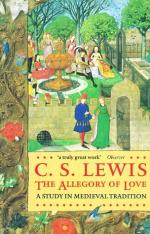|
This section contains 497 words (approx. 2 pages at 400 words per page) |

|
Ekphrasis
Bang's most important technique in Allegory is her use of the convention of ekphrasis, which refers to poetry concerned with the visual, particularly the visual art of painting. Often, an ekphrastic poem will take a work of visual art as its subject and describe or illuminate the visual elements of this work in literary terms. Bang's entire collection The Eye like a Strange Balloon is based on ekphrasis, and each of its fifty-two poems takes a work of art as its subject. Allegory is based on Philip Guston's painting of the same name, although, as is typical of Bang's use of ekphrasis, the poem does not simply explicate or depict Guston's painting but uses it as a starting point to explore Bang's own themes.
Alliteration
Bang is known for her use of repeated vowel and consonant sounds, particularly the technique of alliteration, which refers to the repetition of...
|
This section contains 497 words (approx. 2 pages at 400 words per page) |

|




